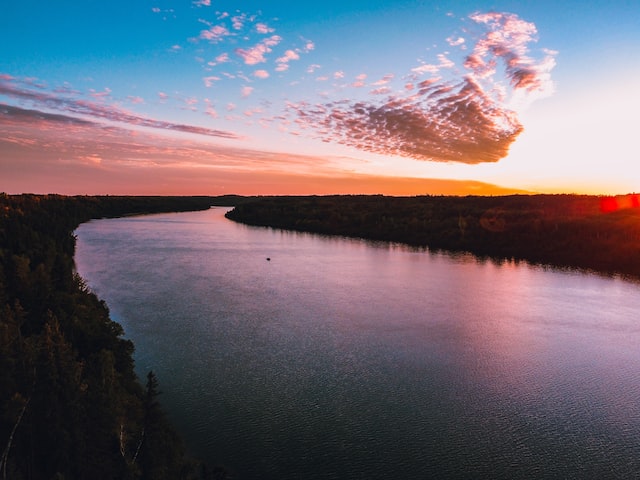There’s a steady stream of news about severe water shortages and “megadrought” around the globe. As the Colorado River dries up in the United States, it’s clear that everyone – from families, to small businesses, to multinational corporations – should be asking the same question: What are we going to do about it TODAY? Tomorrow will be too late for all of us to become water stewards. Even water-rich Canada must deal with climate-change impacts on water security and quality, especially for its indigenous communities.
Water is sitting where carbon emissions were more than 20 years ago. That’s when organizations began thinking seriously about their role in carbon emissions and the resulting acceleration of climate change. Carbon emissions tracking was born, and, though we still have a long way to go for all companies to track emissions efficiently, progress has been made. On the other hand, water stewardship – which no one should equate with simple water conservation – is only just now becoming a priority because it’s so apparent how shortages affect our daily lives. Water is the carbon of 2022, and data on both must be systematically collected if we’re going to find a climate change solution.
How do you become a good water steward?
When we talk about water most people start – and unfortunately finish – with water consumption and cost only. However, water stewardship has to be about measuring and managing an organization’s water footprint, informed by water practices aimed at giving back water to the system rather than just taking. Water footprints are a measure of a company’s use of fresh water, measured on both consumption and pollution impacts.
So the first step might be just educating everyone in the enterprise about what a water footprint is and some of the common categories of water measurement – blue, grey and green.
Blue: The fresh water used to make a product, or taken from one body of water and returned to another.
Green: Water contained in the root zone of soil and used by plants. Agricultural industries are most likely to have a large green footprint.
Grey: Any polluted water or discharge that comes as a result of making a product.
By thinking about these different types of water, we’re taking a wide-angle view that includes all operational processes rather than just looking at what comes out of our faucets. It also gives you an idea of global impact, rather than just cost or consumption. For example, the United States’ total water footprint is made of approximately 69% green, 8% blue, and 22% grey, and 20% of the total footprint lies outside the country. Here’s another number that might give you pause: over 80% of wastewater resulting from human activities is discharged into rivers and seas without any treatment or pollution removal.
Good water stewardship means designing a program that considers these water types and getting ahead of potential water-related risks whether regulatory, operational, or reputational, rather than waiting for them to happen. It means asking some deeper questions about impact. For example:
- How are we affecting the water balance for the sustainability of our business long term?
- Is the water we’re using groundwater or surface water?
- Are we returning water to the environment, and if so, is it going back to the original source?
- What is our true impact on the community and do we account for other stakeholders with our water usage?
- If we’re collecting rainwater or using sources that depend on snow melt or reservoirs, what is the impact of the water that never made it to the soil it might normally go to?
We’re on the water stewardship train – now what?
An action plan for reducing a water footprint will vary in focus depending on where your footprint falls on the blue-green-grey spectrum. Agricultural companies, for example, will need to focus on green water, while a power plant that uses a lot of freshwater in a cooling process would look more closely at blue water.
It’s key that the C-suite starts this whole process buying into this principle: Water stewardship is an opportunity that can improve the bottom line, not a challenge to overcome or a cost center. That will mean an honest appraisal of how water stewardship goals align with an organization’s overall goals. Adding a water stewardship initiative will need adjustments in timelines, priorities, and budget and resources distribution. Yes, there will be costs associated with new practices, but often water stewardship turns out to save more in the long term than it burns, especially if you are assigning the right monetary value to climate impacts. Financial goals of the company are usually enhanced by water stewardship, not negatively impacted.
Water is the new carbon in 2023 and beyond because all of the tracking, data collecting, and monitoring that goes into a stewardship program is still developing. That makes it an exciting time for those who are developing these programs and the strategies behind them. Water also overlaps with a slate of other existential challenges – for example, global warming, ecosystem/biodiversity loss, and food availability for a planet of 9 billion people. So it acts as a linchpin connecting all the solutions to these pressing problems.
When we all strive toward goals that innovate to serve the common good, we will start to see real traction on countering severe climate change impacts.
Ted Dhillon is the co-founder and CEO of FigBytes











